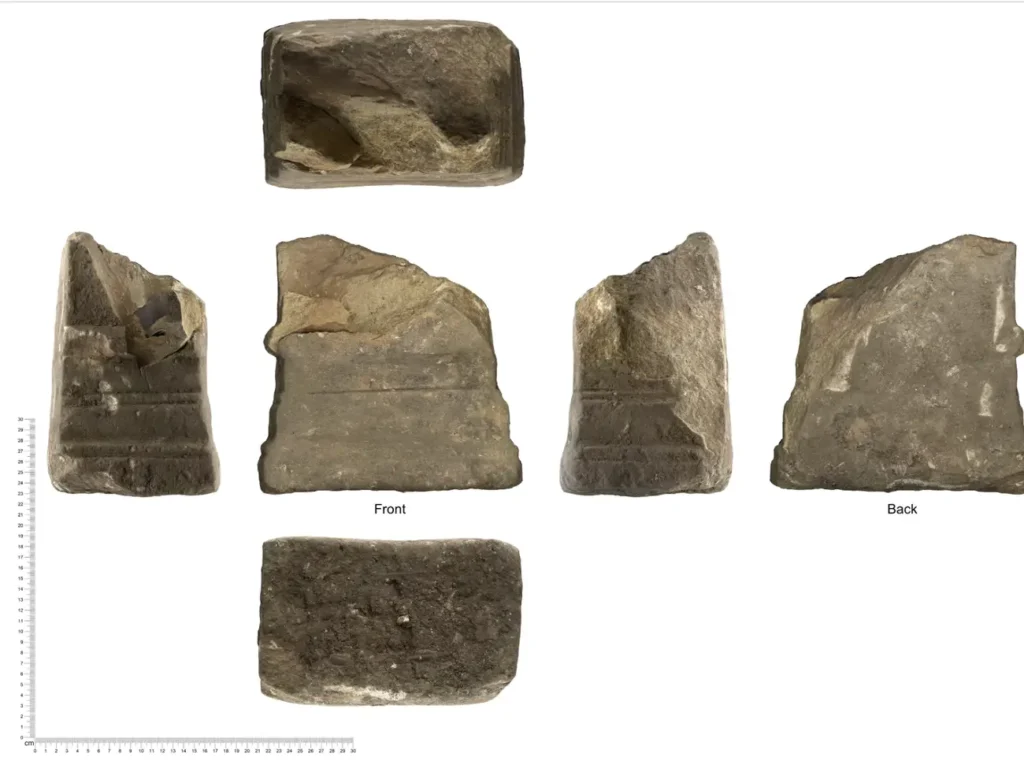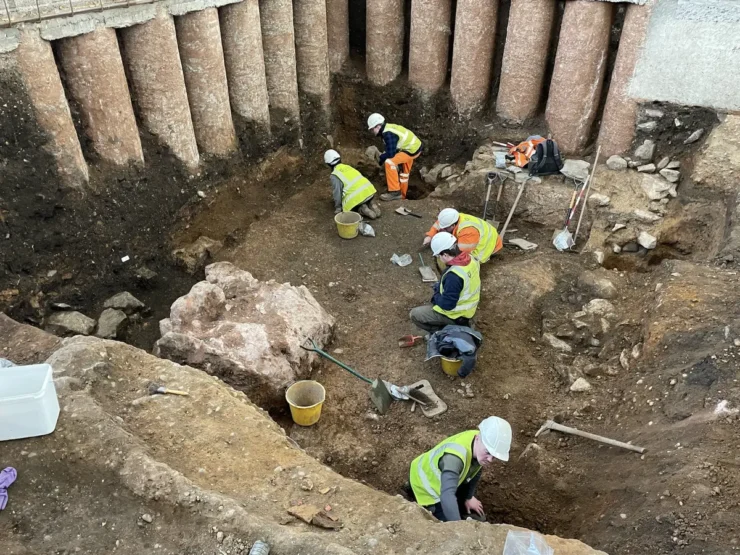Archaeologists in Britain have discovered what they believe to be an ancient Roman temple or place of worship beneath a cemetery on the grounds of Leicester Cathedral.
Experts from the University of Leicester claim to have uncovered evidence that the site has been used for worship and religious rites for around 1,800 years.
In the final stages of the project, archaeologists went down about 3 meters below ground to reach Roman levels and discovered an altar stone in what appears to be the basement of a large building, possibly constructed in the 2nd century.
Mathew Morris, Director of Excavations at the University of Leicester Archaeological Services, said, “It is likely that this was a private place of worship, a family temple or a cult room where a group of individuals worshipped privately.” He said. He added that subterranean chambers similar to the site discovered are often “linked to cults of fertility and mystery,” and said this could have been worship of deities such as Mithras, Cybele, Bacchus, Dionysius and the Egyptian goddess Isis.
Experts said there had already been a “folk tale” for centuries that a Roman temple once stood where Leicester Cathedral once stood. The discovery of the ancient place of worship now confirms this theory.



According to the university, Leicester is one of the most excavated cities in Britain because it was originally the site of a Roman town called Ratae Corieltavorum. Leicester Cathedral famously houses the tomb of King Richard III. Today, more than a hundred thousand people visit Leicester Cathedral every year to see the tomb of King Richard III, the last English monarch to die in battle. It was already known that the church was built on Roman ruins. It is almost certainly one of the six churches mentioned in the Domesday Book, completed in 1086, William’s 1085 inventory of the conquered Kingdom of England.
Archaeologists found many other finds on the cathedral site, including ancient Roman coins and pottery.
“This excavation has produced a remarkable amount of archaeological evidence from a site of modest size,” said John Thomas, Assistant Director of Archaeological Services at the University of Leicester.
Experts hope that new information from the excavation will shed light on Leicester’s history from the Victorian period to medieval, Saxon, Roman and even early Iron Age settlements.
Cover photo: Archaeologists from the University of Leicester are excavating at Leicester Cathedral.
